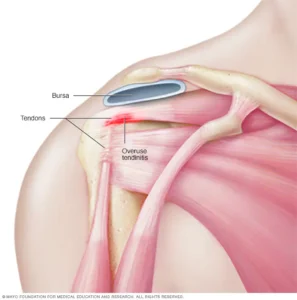
When clients come in with a tendon diagnosis, what does it mean and how can massage help?
First, it is important to understand the differences.
Tendinitis, ending in the suffix – itis, meaning inflammation.
Tendinitis is inflammation of the thick fibrous cords that attach muscle to bone (aka the tendon). The condition causes pain and tenderness just outside a joint.
Tendinitis can occur in any tendon. But it's most common around shoulders, elbows, wrists, knees, and heels.
Tendinosis, ending in the suffix – osis, meaning disease process or condition.
Tendinosis is a degeneration of the tendon's collagen in response to chronic overuse; when overuse is continued without giving the tendon time to heal and rest, such as with repetitive strain injury, tendinosis results.
Tendonitis is an acute, short-term, inflammatory problem that comes with inflammation of the tendon. Tendinosis is the chronic state of tendonitis.
Tendinopathy, ending in suffix – pathy, meaning suffering or disease.
In short, a tendinopathy is someone who tendonitis or tendinosis.
Treatments generally include rest but more advanced cases can result in medication, physical therapy and even surgery.
From a massage scope of practice, we can help with tendon conditions by relieving tension around the injured site.
Pain in the body will cause a biological response of protection which includes a tightening of the muscles around the injury or pain point.
By relieving this tension, the client can get more mobility with less pain.
By having more pain-free movement, the client has better fluid movement around the injury which is one of the major components of healing.
Caution your clients, however, that hurting less, does not give them permission to over-do-it and aggravate the injury again.